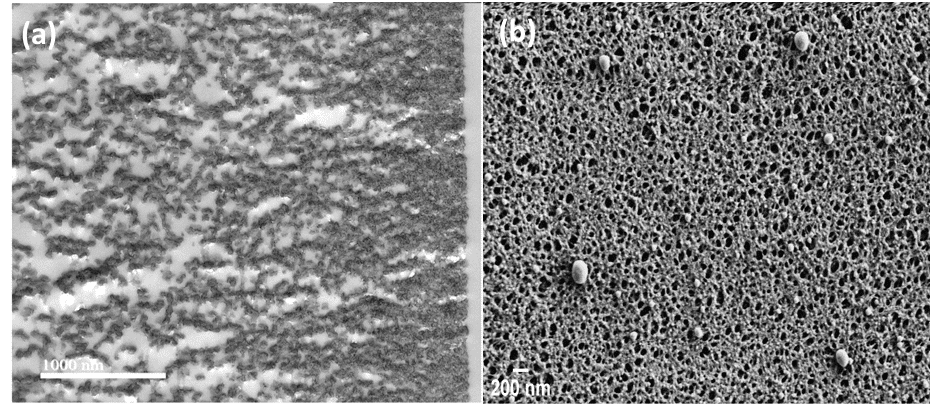
PHASE-INVERTED POLYMERIC MEMBRANES MODIFICATION TROUGH ATOMIC LAYER DEPOSITION
Membranes are an essential part of clean water technologies due to their abundant usage in water desalination and waste water treatments. In the last several years, membrane surface modification methods are intensively investigated to enhance membrane performance by increasing flux and/or selectivity, controlling membranes pore size, improving durability, and reducing fouling. Among these methods, atomic layer deposition (ALD) is a promising new route for producing membranes with controlled chemical composition at the nano scale. ALD deposition of ultrathin layers enables nanometer thickness control and excellent coverage, even on the highly porous and tortuous structure of polymeric membranes.
In this research, we aim to improve the performance and anti-fouling properties of ultrafiltration polymeric membranes through the growth of various metal oxides on the membrane surface via ALD. A model system of polyacrylonitrile and polyetherimide phase-inverted membranes was chosen for this research and the growth of Al2O3 and ZnO on their surface was investigated by electron microscopy methods. The metal oxide growth and its effect on the membrane porosity was characterized with high resolution scanning electron microscopy (HR-SEM). Elemental analysis was performed using SEM- energy dispersive spectroscopy (EDS) in order to study the growth process in details. In addition, transmission electron microscopy (TEM) was performed on microtome-cut cross sections in order to understand the metal oxide growth within the depth of the membrane. The electron microscopy characterization together with water contact angle measurements showed that the metal oxides were grown conformally on the membranes surface resulting in a decrease in pore size and an increase in the membranes’ hydrophilicity.

Figure 1 – cross-section TEM (a) and SEM (b) micrographs of polyetherimide membrane after Al2O3 ALD
Powered by Eventact EMS